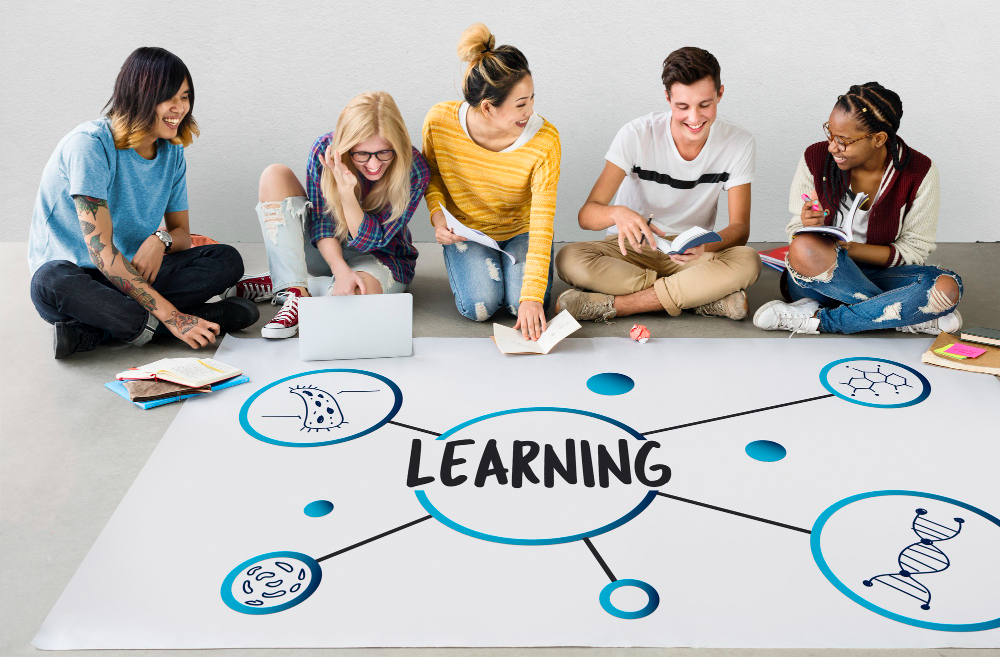Custom eLearning Content Development: A Beginner's Guide
 vinay Bommena
vinay Bommena
In an era where digital transformation is reshaping industries, eLearning has emerged as a powerful tool for education and professional development. Custom eLearning content development, in particular, offers tailored solutions that address specific learning needs and objectives. This article aims to shed light on the fundamentals of custom eLearning content development, its importance, and the key steps involved in creating effective eLearning solutions.

What is Custom eLearning Content Development?
Custom eLearning content development refers to the process of designing and creating online learning materials that are tailored to the unique needs of an organization or individual learners. Unlike generic, off-the-shelf eLearning courses, custom content is specifically crafted to align with the specific goals, industry standards, and learner preferences of the target audience. This personalized approach ensures that the content is relevant, engaging, and effective.
Importance of Custom eLearning Content Development
Relevance and Engagement: Custom eLearning content is designed to meet the specific needs of the learners, making it more relevant and engaging. Learners are more likely to stay motivated and retain information when the content directly relates to their roles and interests.
Flexibility: Custom eLearning solutions can be easily updated and modified to reflect changes in industry standards, organizational goals, or learner needs. This flexibility ensures that the content remains current and applicable.
Enhanced Learning Outcomes: By focusing on the specific skills and knowledge that learners need, custom eLearning content can significantly improve learning outcomes. Tailored content addresses the unique challenges and requirements of the learners, leading to better performance and productivity.
Brand Consistency: Custom eLearning content can incorporate an organization’s branding, values, and culture, ensuring a consistent learning experience that reinforces the organization's identity and message.
Key Steps in Custom eLearning Content Development
Needs Analysis:
Objective: Identify the specific learning needs and goals of the target audience.
Process: Conduct surveys, interviews, and assessments to gather information about the learners' current knowledge, skills, and learning preferences.
Outcome: A clear understanding of the learning objectives and the gaps that need to be addressed.
Instructional Design:
Objective: Design a structured learning experience that meets the identified needs.
Process: Develop a detailed course outline, including learning objectives, content structure, instructional strategies, and assessment methods.
Outcome: A well-planned instructional framework that guides the development of the eLearning content.
Content Development:
Objective: Create engaging and interactive learning materials based on the instructional design.
Process: Develop multimedia elements such as videos, animations, quizzes, and simulations. Ensure that the content is interactive and visually appealing.
Outcome: High-quality eLearning content that effectively communicates the learning objectives.

Technology Integration:
Objective: Implement the eLearning content using appropriate technology platforms.
Process: Select and configure Learning Management Systems (LMS) or other eLearning platforms. Ensure compatibility and accessibility across different devices and browsers.
Outcome: A seamless and user-friendly eLearning environment that supports the delivery of the content.
Testing and Quality Assurance:
Objective: Ensure the eLearning content functions as intended and meets quality standards.
Process: Conduct thorough testing to identify and fix any technical issues, usability problems, or content inaccuracies.
Outcome: An error-free and polished eLearning course ready for deployment.
Deployment and Implementation:
Objective: Launch the eLearning course to the target audience.
Process: Roll out the content via the chosen platform, provide necessary training or support to users, and monitor the initial usage.
Outcome: Successful implementation of the eLearning course, accessible to all intended learners.
Evaluation and Feedback:
Objective: Assess the effectiveness of the eLearning content and identify areas for improvement.
Process: Collect feedback from learners through surveys, assessments, and performance data. Analyze the results to determine the impact of the training.
Outcome: Insights and actionable recommendations for refining and enhancing the eLearning content.

Conclusion
Understanding the basics of custom eLearning content development is essential for organizations and educators looking to create impactful learning experiences. By tailoring content to meet specific needs, leveraging appropriate technologies, and continuously evaluating and improving the content, custom eLearning solutions can significantly enhance learning outcomes and drive organizational success. Embracing the principles of custom eLearning content development allows for a more personalized, engaging, and effective approach to online education and training.
Subscribe to my newsletter
Read articles from vinay Bommena directly inside your inbox. Subscribe to the newsletter, and don't miss out.
Written by
